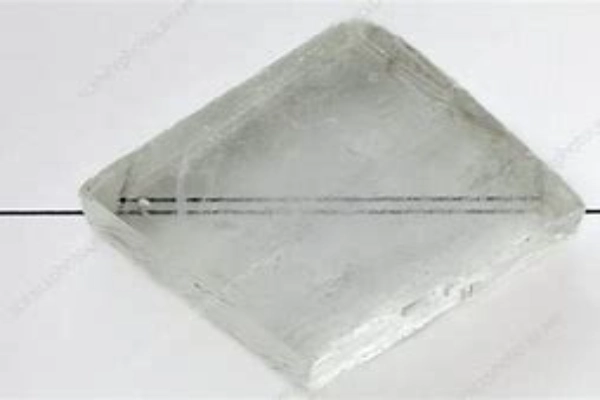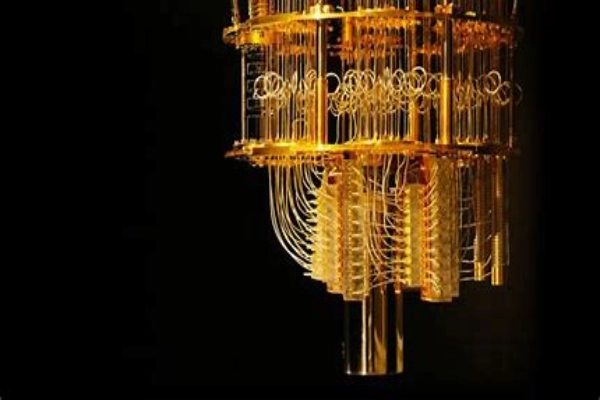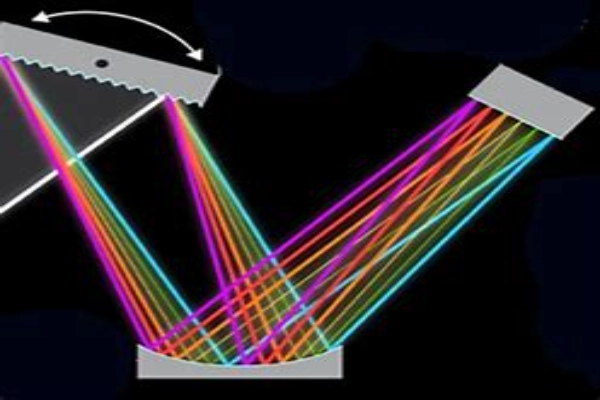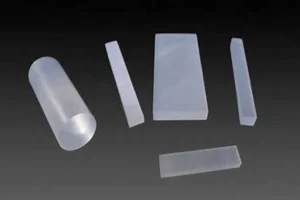Introduction to Birefringent Crystals
Birefringent crystals are unique optical materials that possess two different refractive indices. This property allows them to split a ray of light into two distinct rays when it passes through the crystal. In the world of optics and photonics, these crystals play a pivotal role due to their ability to manipulate light in ways other materials cannot.

The Working Principle of Birefringent Crystals
The working principle of birefringent crystals is a fascinating interplay of light and matter. When light, which is an electromagnetic wave, encounters a medium, its speed is determined by the medium’s refractive index. In most materials, this refractive index is uniform in all directions. However, birefringent crystals are unique because they have an anisotropic structure, meaning their properties vary depending on the direction.
As light enters a birefringent crystal, it doesn’t travel as a single unified wave anymore. Instead, due to the anisotropic nature of the crystal, the light wave is split into two components, each traveling at a different speed. These are termed the ordinary ray and the extraordinary ray. The ordinary ray follows Snell’s law of refraction, behaving as it would in any other isotropic medium. In contrast, the extraordinary ray deviates from this path because of the crystal’s unique internal structure.
This splitting is not arbitrary. The direction of the incoming light, relative to the crystal’s optical axis (a direction in which there is no birefringence), determines the behavior of these rays. If light enters parallel to this optical axis, there’s no splitting. However, if it enters at any other angle, the degree of splitting becomes more pronounced.
The reason behind this behavior lies in the atomic arrangement of the crystal. Atoms and molecules in birefringent crystals are arranged in such a way that they create different paths for light, depending on its polarization direction. This results in varying refractive indices within the same crystal. As a consequence, different components of the light wave experience different speeds, leading to the phenomenon of birefringence.
In practical applications, this property of birefringent crystals becomes invaluable. By controlling the angle of light entry and the orientation of the crystal, one can manipulate the behavior of light in precise ways, leading to innovations in optical technology and advancements in fields ranging from communication to medical imaging.

Factors Influencing Birefringence
Several factors can influence the degree of birefringence in a crystal:
- Crystal Structure: The arrangement of atoms and molecules within the crystal lattice.
- Temperature: Birefringence can vary with temperature changes.
- Wavelength of Light: Different wavelengths can experience varying degrees of birefringence.
Applications of Birefringent Crystals
Birefringent crystals, with their unique ability to manipulate light, have found their way into a myriad of applications in the field of optics and photonics. Their intrinsic property of having two distinct refractive indices allows them to be employed in devices that require precise control over the behavior of light.
Waveplates are one such application. At their core, waveplates are designed to control and modify the polarization state of light. Polarization, in essence, describes the orientation of the oscillations of light waves. By leveraging the properties of birefringent crystals, waveplates can transform one type of polarization into another. For instance, when linearly polarized light, where the oscillations occur in a single plane, passes through a waveplate, it can emerge as circularly polarized light, where the oscillations occur in a helical pattern. This conversion is crucial in many optical systems, especially in lasers and imaging devices, where the control of light’s polarization can significantly enhance performance and provide new functionalities.
In the telecommunications sector, the ability to control light is paramount. As data is transmitted over vast distances through fiber-optic cables, the need to modulate, or vary, the intensity of light becomes essential. Birefringent crystals play a pivotal role in optical modulators. These devices can rapidly change the intensity of light by altering its polarization state. By doing so, they can encode information onto light waves, turning them into carriers of data. The faster and more precisely this modulation occurs, the more data can be transmitted, making the role of birefringent crystals in modulators indispensable for high-speed communication networks.
Optical isolators are another application where birefringent crystals shine. In many optical systems, back reflections or unwanted light traveling in the reverse direction can cause interference, reduce efficiency, or even damage sensitive components. Optical isolators, as the name suggests, isolate the system from these unwanted reflections. They permit light to travel in only one direction, acting as a one-way street for photons. The heart of these isolators is often a birefringent crystal, which, in conjunction with other optical elements like polarizers and magnets, ensures that light can only proceed in the intended direction. This protection is especially vital in high-power laser systems, where back reflections could lead to catastrophic failures.
In conclusion, the applications of birefringent crystals underscore their importance in modern optical technology. From controlling the very nature of light in waveplates to facilitating high-speed communications in modulators, and ensuring the safe operation of optical systems with isolators, these crystals are truly versatile. As our understanding of these materials deepens and technology advances, it’s likely that the applications of birefringent crystals will continue to expand, driving innovations in fields we’ve yet to imagine.

Advantages of Using Birefringent Crystals
Birefringent crystals have carved a niche for themselves in the world of optics, and their widespread use can be attributed to a host of advantages they bring to the table.
First and foremost, the high precision offered by these crystals is unmatched. The very essence of birefringence lies in the crystal’s ability to possess two distinct refractive indices. This unique property allows for meticulous control over light polarization. In applications where the slightest deviation in polarization can lead to significant errors, such as in quantum computing or advanced microscopy, the precision of birefringent crystals becomes invaluable. Their ability to consistently and accurately split light into its ordinary and extraordinary components ensures that optical systems function at their peak performance.
Versatility is another significant advantage. The optical world is vast, with a plethora of devices and applications, each with its own set of requirements. Birefringent crystals, with their inherent properties, can cater to a wide spectrum of these needs. Whether it’s in the realm of telecommunications, where they play a role in modulating light signals, or in scientific research, where they might be used in interferometers or spectrometers, these crystals find their place. Their adaptability ensures that they remain a staple in optical toolkits, ready to be employed wherever light manipulation is required.
Lastly, the durability of birefringent crystals cannot be overstated. Optical systems, especially those used in industrial or research settings, can often be subjected to high-intensity light beams. Materials that degrade or alter their properties under such conditions can be a significant liability. Birefringent crystals, however, stand resilient. Their robustness ensures that they maintain their properties and continue to function effectively even when exposed to intense light over extended periods. This durability not only ensures consistent performance but also translates to cost savings in the long run, as the need for replacements or recalibrations is reduced.
In essence, the advantages of birefringent crystals—precision, versatility, and durability—make them an indispensable asset in the world of optics. Their contributions to the field are profound, and as technology continues to evolve, their relevance is only set to increase.

Challenges and Considerations
Birefringent crystals, despite their myriad of benefits, come with their own set of challenges that need careful consideration. One of the primary concerns is temperature stability. As the temperature fluctuates, the refractive indices of the crystal can change, affecting its birefringent properties. For applications that require consistent performance, such as precision optics or laser systems, even minor temperature-induced variations can lead to significant deviations in results.
Another challenge is the dependency on the wavelength of light. Birefringent properties can vary based on the wavelength of the incident light. This means that a crystal that works perfectly for one wavelength might not be suitable for another. This wavelength sensitivity necessitates careful selection and calibration of the crystal for the intended application.
Lastly, the quality of the crystal material plays a pivotal role. Impurities, defects, or inconsistencies in the crystal lattice can adversely impact its performance. Ensuring that the crystal is of high quality, free from imperfections, and sourced from reputable manufacturers becomes crucial for optimal performance.

Conclusion
Birefringent crystals, with their unique optical properties, have carved a niche for themselves in modern optics and photonics. Their ability to manipulate light makes them indispensable in various applications, from telecommunications to advanced scientific research. As technology advances, the demand for these crystals and their applications will only continue to grow.
FAQs
- What are the primary types of birefringence?
- There are mainly two types: positive and negative birefringence.
- How are birefringent crystals created?
- They are naturally occurring in some minerals, but they can also be synthetically produced for specific applications.
- Why is the control of light polarization important?
- Controlling light polarization is crucial in many optical applications, including imaging, communications, and laser systems.
- Can birefringence be observed in materials other than crystals?
- Yes, certain polymers and glasses can also exhibit birefringence.
- How does temperature affect birefringent crystals?
- Temperature changes can alter the refractive indices of the crystal, affecting its birefringence properties.







